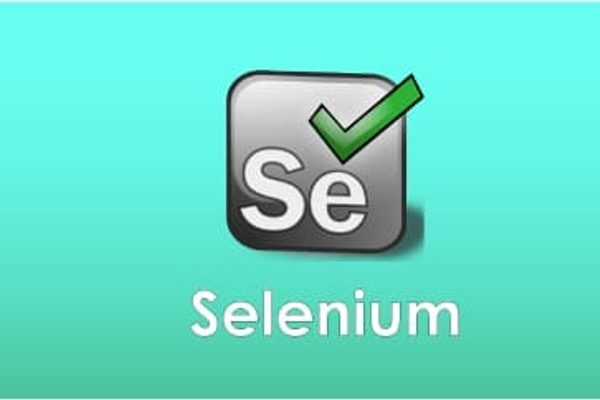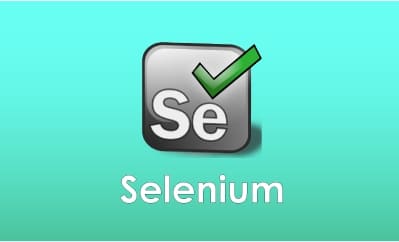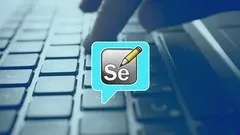This plan includes
- Limited free courses access
- Play & Pause Course Videos
- Video Recorded Lectures
- Learn on Mobile/PC/Tablet
- Quizzes and Real Projects
- Lifetime Course Certificate
- Email & Chat Support
What you'll learn?
- HTML Basics required for understanding or learning Locators
- Locator concepts, Types and choosing Locators
- Creating XPath Expressions from scratch on the fly
- Creating CSS Selectors from scratch on the fly
- FireBug and FirePath Alternatives for auto-generating the Locators
Course Overview
Pre-requisites
- Basic knowledge about software usage
- Desire to learn new skills
Target Audience
- Beginners who are new to Selenium Automation
- Beginners aspiring to learn different Locators
- If you want to learn all the Locators to be used in Selenium Automation in detail, complete and from scratch
Curriculum 89 Lectures 20:15:28
Section 1 : HTML
- Lecture 2 :
- HTML Tags Attribute Names Attribute Values Enclosed Text and HTML Elements
- Lecture 3 :
- Structure of HTML
- Lecture 4 :
- Adding Title to the HTML Web Page
- Lecture 5 :
- Adding Paragraphs to the HTML Web Page
- Lecture 6 :
- Adding Bold, Italic and Underlined text to the HTML Web Page
- Lecture 7 :
- Adding different sizes of headings
- Lecture 8 :
- Adding hyperlinks to the web page
- Lecture 9 :
- Adding Rulers to the Web Page
- Lecture 10 :
- Adding Images to the Web Page
- Lecture 11 :
- Adding Line Breaks to the Web Page
- Lecture 12 :
- Adding Table to the Web Page
Section 2 : Locators
- Lecture 1 :
- What are Locators?
- Lecture 2 :
- Different Types of Locators
- Lecture 3 :
- Demonstrating ID locator
- Lecture 4 :
- Demonstrating Name locator
- Lecture 5 :
- Demonstrating Class Name locator
- Lecture 6 :
- Demonstrating Link Text locator
- Lecture 7 :
- Demonstrating CSS Selector locator
- Lecture 8 :
- Demonstrating XPath locator
- Lecture 9 :
- Demonstrating DOM locator
- Lecture 10 :
- Priority of Locators
- Lecture 11 :
- Additional details about different Locators
Section 3 : XPath Expressions
- Lecture 1 :
- What is an XPath?
- Lecture 2 :
- Hierarchy of HTML Source Code
- Lecture 3 :
- Types of XPath Expressions
- Lecture 4 :
- Building Absolute XPath Expressions
- Lecture 5 :
- Advantages and Disadvantages of Absolute XPath Expressions
- Lecture 6 :
- Relative XPath Expressions - First Set of Examples
- Lecture 7 :
- Relative XPath Expressions - Second Set of Examples
- Lecture 8 :
- Relative XPath Expressions - Third Set of Examples
- Lecture 9 :
- Relative XPath Expressions - Fourth Set of Examples
- Lecture 10 :
- Relative XPath Expressions - Fifth Set of Examples
- Lecture 11 :
- Relative XPath Expressions - Sixth Set of Examples
- Lecture 12 :
- Relative XPath Expressions - Seventh Set of Examples
- Lecture 13 :
- XPath Expressions - Wild Cards
- Lecture 14 :
- XPath Expressions - HTML Tables
- Lecture 15 :
- Different XPath Functions
- Lecture 16 :
- text() XPath Function
- Lecture 17 :
- starts-with() XPath Function
- Lecture 18 :
- last() XPath Function
- Lecture 19 :
- position() XPath Function
- Lecture 20 :
- Different XPath AXES
- Lecture 21 :
- following XPath AXES
- Lecture 22 :
- preceding XPath AXES
- Lecture 23 :
- following-sibling XPath AXES
- Lecture 24 :
- preceding-sibling XPath AXES
- Lecture 25 :
- parent XPath AXES
- Lecture 26 :
- child XPath AXES
- Lecture 27 :
- ancestor XPath AXES
- Lecture 28 :
- descendant XPath AXES
- Lecture 29 :
- Advantage of Relative Xpath Expressions over Absolute XPath Expressions
- Lecture 30 :
- contains() XPath Function
Section 4 : CSS Selectors
- Lecture 1 :
- What is a CSS Selector?
- Lecture 2 :
- Types of CSS Selectors
- Lecture 3 :
- Building Absolute CSS Selectors
- Lecture 4 :
- Advantages and Disadvantages of Absolute CSS Selectors
- Lecture 5 :
- Relative CSS Selectors - First Set of Examples
- Lecture 6 :
- Relative CSS Selectors - Second Set of Examples
- Lecture 7 :
- Relative CSS Selectors - Third Set of Examples
- Lecture 8 :
- First-child in CSS Selectors
- Lecture 9 :
- Last-child in CSS Selectors
- Lecture 10 :
- nth-child in CSS Selectors
- Lecture 11 :
- Comma and Asterisk Symbols in CSS Selectors
- Lecture 12 :
- Starts With, Ends With and Contains Symbols in CSS Selectors
- Lecture 13 :
- Using not in CSS Selectors
- Lecture 14 :
- Using following sibling in CSS Selectors
- Lecture 15 :
- Locating disabled, enabled and selected UI elements using CSS Selectors
- Lecture 16 :
- XPath Expressions are powerful over CSS Selectors
- Lecture 17 :
- CSS Selectors have higher priority over XPath Expressions
Section 5 : FireBug and FirePath Alternatives
- Lecture 1 :
- FireBug got deprecated and discontinued
- Lecture 2 :
- List of Alternatives
- Lecture 3 :
- ChroPath for Chrome Browser
- Lecture 4 :
- ChroPath for Firefox Browser
- Lecture 5 :
- ChroPath for Opera Browser
- Lecture 6 :
- Devtools-highlighter
- Lecture 7 :
- Try XPath
- Lecture 8 :
- Default Chrome Dev Tools
- Lecture 9 :
- XPath Finder
- Lecture 10 :
- XPath Helper
- Lecture 11 :
- Relative XPath Helper
- Lecture 12 :
- MRI
- Lecture 13 :
- True Path for Chrome
- Lecture 14 :
- True Path for Firefox
- Lecture 15 :
- Ranorex Selocity
- Lecture 16 :
- Default Firefox Dev Tools
- Lecture 17 :
- Chrome Console
- Lecture 18 :
- ChroPath is the best
- Lecture 19 :
- Learn Manual Creation of XPath Expressions and CSS Selectors
Our learners work at
Frequently Asked Questions
How do i access the course after purchase?
It's simple. When you sign up, you'll immediately have unlimited viewing of thousands of expert courses, paths to guide your learning, tools to measure your skills and hands-on resources like exercise files. There’s no limit on what you can learn and you can cancel at any time.Are these video based online self-learning courses?
Yes. All of the courses comes with online video based lectures created by certified instructors. Instructors have crafted these courses with a blend of high quality interactive videos, lectures, quizzes & real world projects to give you an indepth knowledge about the topic.Can i play & pause the course as per my convenience?
Yes absolutely & thats one of the advantage of self-paced courses. You can anytime pause or resume the course & come back & forth from one lecture to another lecture, play the videos mulitple times & so on.How do i contact the instructor for any doubts or questions?
Most of these courses have general questions & answers already covered within the course lectures. However, if you need any further help from the instructor, you can use the inbuilt Chat with Instructor option to send a message to an instructor & they will reply you within 24 hours. You can ask as many questions as you want.Do i need a pc to access the course or can i do it on mobile & tablet as well?
Brilliant question? Isn't it? You can access the courses on any device like PC, Mobile, Tablet & even on a smart tv. For mobile & a tablet you can download the Learnfly android or an iOS app. If mobile app is not available in your country, you can access the course directly by visting our website, its fully mobile friendly.Do i get any certificate for the courses?
Yes. Once you complete any course on our platform along with provided assessments by the instructor, you will be eligble to get certificate of course completion.
For how long can i access my course on the platform?
You require an active subscription to access courses on our platform. If your subscription is active, you can access any course on our platform with no restrictions.Is there any free trial?
Currently, we do not offer any free trial.Can i cancel anytime?
Yes, you can cancel your subscription at any time. Your subscription will auto-renew until you cancel, but why would you want to?
Instructor

356447 Course Views
5 Courses



 Tech & IT
Tech & IT
 Business
Business
 Coding & Developer
Coding & Developer
 Finance & Accounting
Finance & Accounting
 Academics
Academics
 Office Applications
Office Applications
 Art & Design
Art & Design
 Marketing
Marketing
 Health & Wellness
Health & Wellness
 Sounds & Music
Sounds & Music
 Lifestyle
Lifestyle
 Photography
Photography




















